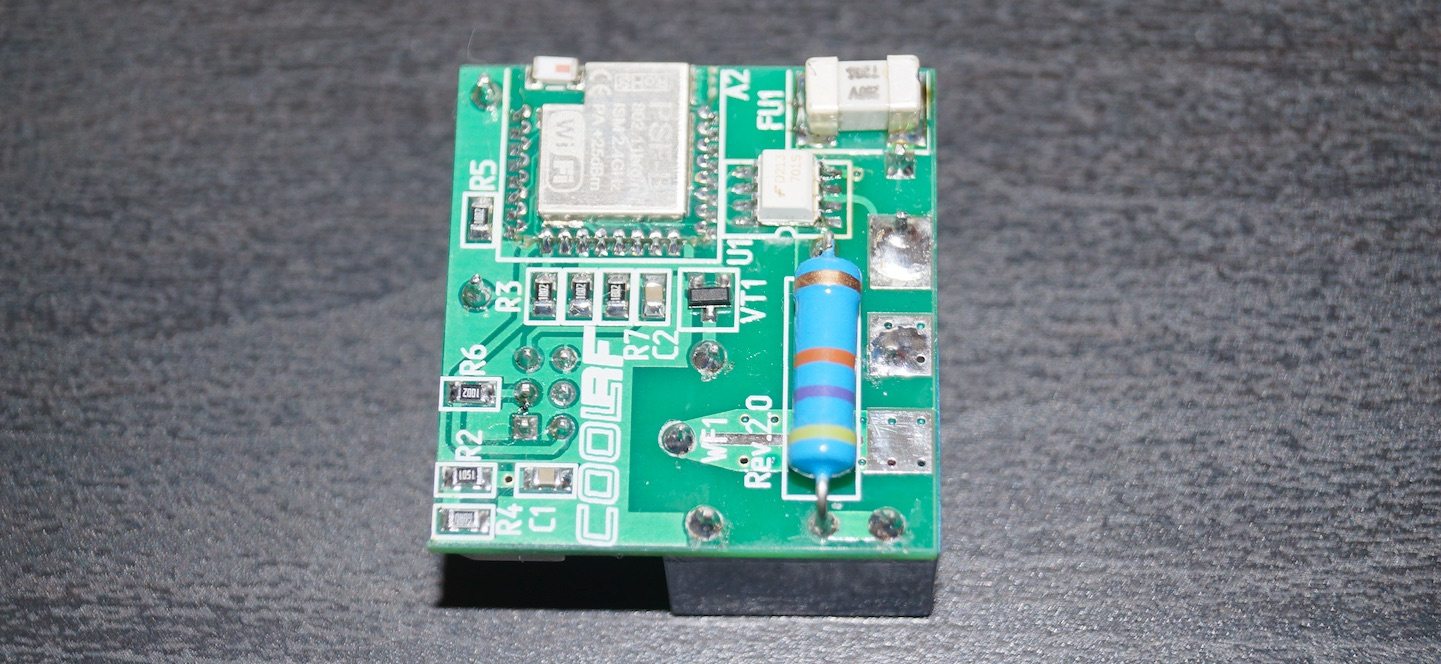COOLRF WF1: Smart floor heating thermostat

Last fall, during the overhaul of the kitchen and corridor, I first encountered an electric heated floor. I had three segments of a warm floor, and in the walls - three thermostats. The porcelain stoneware on the floor pleasantly warmed up, and the monthly electricity bill grew noticeably. The dream of a warm floor transformed into a dream about a smart thermostat. Under the cut description of the device, which turned out in the end.
What is wrong with ordinary thermostats?
I bought myself three ErgoLight thermostats. Because it is the most inexpensive solution with protection from children. I have a son with very playful hands. Conventional mechanical thermostats with twists would surely live only according to his, childish, laws. While child protection saves thermostats, the truth has to regulate them when the child is sleeping. Because the algorithm of this protection is extremely simple - to hold the only button for a long time. So, the first problem - sooner or later, the child hacks this protection.

')
The target temperature on these thermostats is regulated in steps. The sizes of steps differ on different models. For those that I, on the scale have marks 5, 20, 22, 24, 26, 28, 30, 35 degrees. In my case, it turned out that 30 degrees is weak, and 35 is already too strong. This is problem number two.
The third problem was surprised by its surprise. Apparently, in the kitchen we placed the temperature sensor too close to the corridor segment. As a result, when installed on thermostats of the same value, two segments in the corridor are the same temperature, and the kitchen segment is noticeably cooler.
The fourth problem is appearance. I somehow picked up at least a little suitable series of sockets-switches. Look alike, but not quite. I didn’t think about it at the start of the installation of a warm floor. But the thermostat and the socket can easily be around and the difference will be very noticeable. Actually, on one wall I have such a neighborhood.
The fifth problem - LEDs shine quite brightly. Maybe for some it will not be a problem, but on the contrary - some night illumination of the corridor. But I have room doors with glass inserts and the light from the corridor through these inserts sometimes makes it difficult to fall asleep. Especially when the protection is on and the piercing blue LED is on.
The sixth problem is the lack of centralized management. Basically, I would be ready to turn off the floor heating by hand at night. But I have three thermostats in the kitchen corridor. This summer, added two more in the toilet-bathroom. If each thermostat is in child protection mode, turning off five devices at night and turning them on in the morning turns into a task that is too heavy for a lazy person. Easier to pay for electricity. Plus in the morning I would like them to be included by someone else. And I would, in half an hour, walk already on the heated floor.
Yes, there are thermostats with the ability to work on a schedule. With LCD screens and piles of buttons. But for me personally, they are not particularly interesting. Because a) design and b) price. Buy five thousand thermostats, three each, which will look very clumsy in the walls next to my sockets - this is not mine.
What good is our smart thermostat?
In general, the thermostat control from the wall is evil. It is necessary to pay attention to the design, invent a lock from children. When there are several thermostats, it is still not convenient to crawl over them around the apartment for adjustment.
Almost in every series of sockets-switches there is a special device - a plug. It is not always sold in convenience stores such as leroi or obi. But to google and buy this is usually not a problem. I bought myself such for the Legrand Carvia series.

If you place a thermostat with radio control behind such a plug, then several problems are solved at once. Both with appearance, and with protection against children, and with the central management. It is on this placement that our COOLRF WF1 thermostat is designed.
Respectively:
- There are no controls on the wall at all. Protection from children is absolute. At least until the child has access to the web interface. But this should happen much later, there will be more brains and less naughty hands.
- No bright indicators, the thermostat silently lives behind the stub.
- Exterior design is exactly what you need. Without differences and compromises.
Behind the plug in the wall is such a module:

On board the power supply control unit, Wi-Fi radio module based on the ESP8285 chip, relay, feedback to control the sticking of the relay. An NTC temperature sensor from Ergolight thermostats, R = 10 kΩ at + 25 ° C, is used.

At the moment, we are testing the second revision of the device. The history of the development can be tracked in our VK-community . In the same place we publish short notes with photos of other devices. The process moves slowly, but does not stand still.
As a first approximation, if testing of the current revision is successful, we plan to start selling thermostats in the form of designers closer to the end of September and the beginning of October. Sets for self-soldering.
What else is not ready?
The firmware is not ready at all. Designers will be sold in the expectation that the DIY will program the thermostat themselves, as your heart desires. Using NodeMCU, this task is easy to lift, even for beginners. Later there will be a separate post about such programming.
In parallel, we are slowly writing our firmware, with which the device would be useful to users who are not familiar with programming and a soldering iron. Driving through the built-in web interface, the thermostat will be able to work both independently and in the network of similar devices. This work is still at the interface design stage, that is, at the very beginning.
By the way, if someone from Yekaterinburg wants to take part in the development of firmware for our thermostat for a fee (that is, not for free), write in a personal here or on VK .
Source: https://habr.com/ru/post/400769/
All Articles